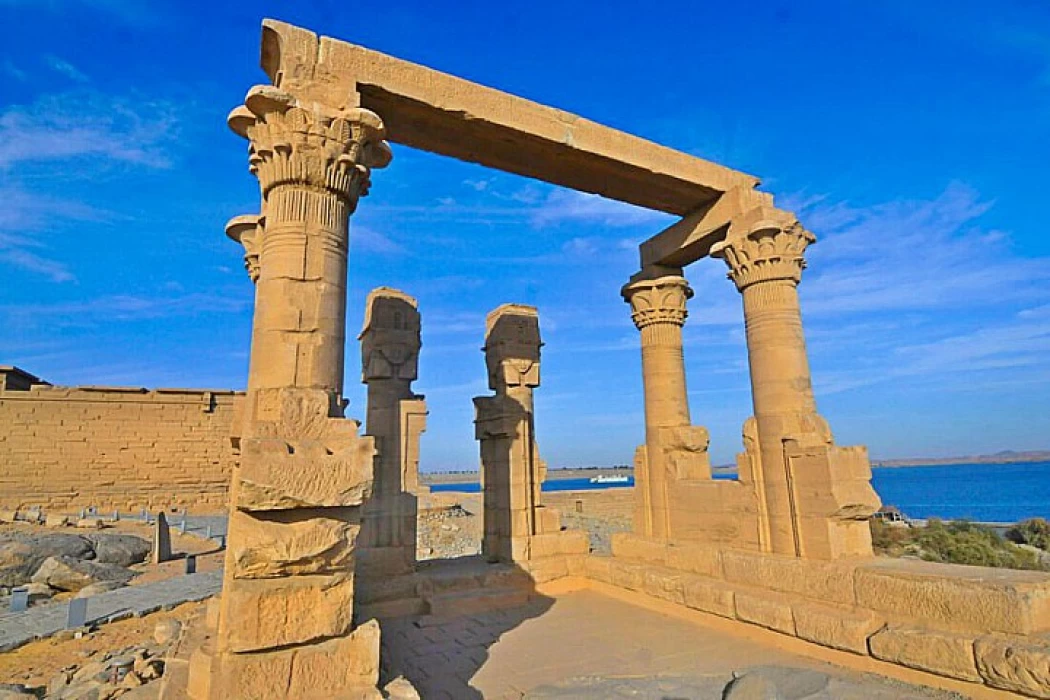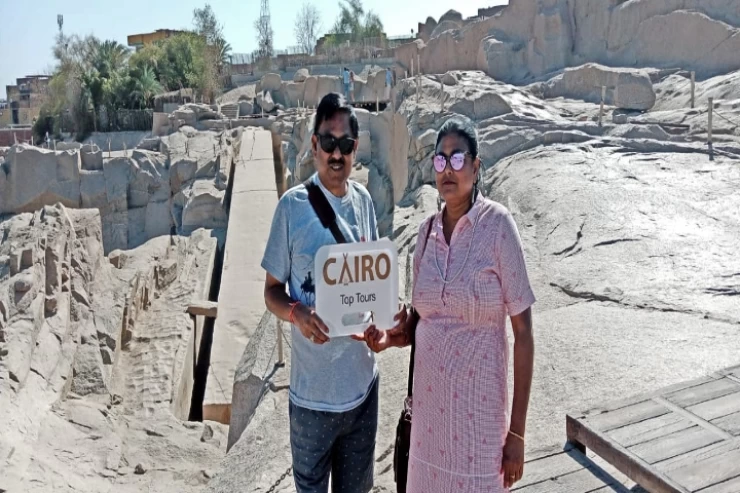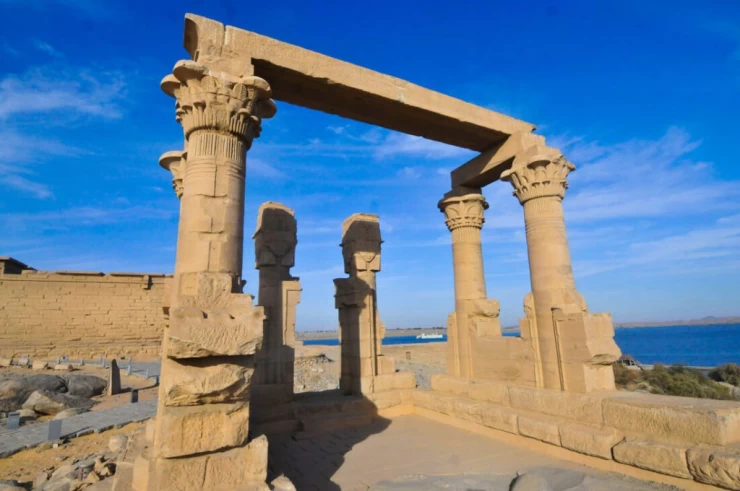
History of Kalabsha Temple
The Kalabsha temple, also known as the Mandolis temple, is an ancient Egyptian temple whose original location is Bab al-Kalabsha, about 50 km south of Aswan. The temple was located on the West Bank of the Nile and was built around 30 BC during the Roman rule of Egypt. It is a temple for the worship of the goddess Mandolis, the sun god of the Nubians. It was built on the ruins of another temple of King Amenhotep III and was built during the reign of Emperor Augustus but was not completed. The dimensions of the temple are 76 meters long and 22 meters wide. Although the temple was built in the Roman era, it contains drawings of the god Horus on the inner wall of the temple. The temple has a staircase leading to the roof, which overlooks an open view of the temple and the holy lake. There are many historical records on the walls of the temple, including the orders of the Roman commander Aurelius Bessarion in 250 AD, in which pigs are forbidden to enter the temple, as well as writings of the Nubian king Silko, in which he records his victories over belmes and represents himself as a Roman soldier on horseback and Silko was a Christian Nubian king of the kingdom of nobatia.
With the support of the German government, the Kalabsha temple was moved to protect it from being flooded after the construction of the High Dam. The new location of the temple is located just south of the dam and the relocation process has taken two years. It is the second largest temple of Nubian Antiquities (after Abu Simbel) to be moved. Although the temple is not fully built, it is considered one of the best architectural examples of the architecture of the Egyptians in Nubia
Among the most important tourist attractions in Aswan is the Kalabsha temple, which is considered one of the most interesting archaeological sites and contains many secrets, as well as the Chamber of the Holy of Holies of the God mandolis, which is a wonderful tourist destination for visitors.
"Homeland" publishes 8 pieces of information about the Kalabsha temple, according to archeologist Yusra Muhammad.
The Kalabsha temple was built during the reign of Emperor Augustus to worship the sun god, mandolis, who was believed to be the God of the Nubians.
According to research approved by the Ministry of Antiquities, the phenomenon of baptism in the Holy of Holies Chamber of the temple was discovered twice a year, namely on the days February 14 and October 29.
The walls of the temple have inscriptions depicting various deities, including mandolins, Isis, Osiris, Ptah, and Horus. It also contains Christian inscriptions dating back to the period of its conversion into a church.
The temple, which is one of the most important in Nubia, has inscriptions telling stories from the realities of ancient Egypt in the temple sanctuary.
The temple also has a historical inscription showing the victories of the Nubian king Silko.
The Kalabsha temple is the second largest temple in Nubia after the Abu Simbel Temple and is characterized by a unique Nubian architectural style.
The Kalapsha temple was moved after the construction of the High Dam, and the process of its relocation lasted for two years with the support of the German government.
The temple was converted into a church during the Coptic era, and the Coptic inscriptions on its walls are strong evidence of this.
















